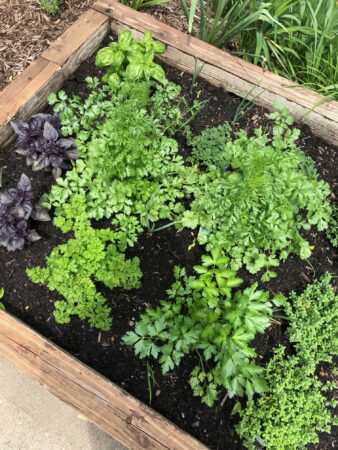If you have any experience with gardening, it’s guaranteed that you’ve thought about the best time to harvest your precious produce. When is it too early, and when is it too late? Why do some plants produce fruit over a longer period of time, and why do some ripen all at once? Why are some plants harvested at different times of the year? Read on to find out!
Spring Harvests
The best crops to harvest in the spring are those that have some frost tolerance. This is because they will need to grow during a time of year where weather can be very unpredictable and days can quickly turn into cold nights while winter is still melting away. Cabbages, spinach, kale, peas, broccoli, arugula, carrots, radishes, and scallions are some examples of plants that can withstand some colder weather. But why these plants?
The answer lies in their water content, germination, and overwintering. Plants like broccoli have seeds that can germinate at lower temperatures. They also have lower water content or the ability to turn starches into sugars – reducing the chances of freezing to death. Some plants actually taste better after cold weather because their sugar content will be higher. Other plants like carrots can be harvested in the spring because they are able to be preserved under ground through the winter!
Summer Harvests
Most plants can be harvested during the summer, depending on when they are planted. The average time for most garden vegetables to fully develop is 2-3 months. Beans, peas, melons, corn, cucumbers, tomatoes, and peppers just to name some.
Tomatoes and other fruits and vegetables can be harvested before they turn fully ripe because they can continue to ripen after being picked. This method actually can be beneficial because it prevents splitting and bruising, and may even improve the taste of the produce if the weather is too hot outside. This is possible because of the plant hormone ethylene. This process is not dependent on nutrients from the plant or even on sunlight – which is why some fruits and vegetables can continue to ripen after being picked.
Fall Harvests
Brussel sprouts, broccoli, beets, radishes, turnips, collard greens, onions, cauliflower, peas, kale, parsnips, root vegetables, squash. Many vegetables are harvested in the fall. This is because they have had the whole summer to grow. Or because they can be planted in slightly cooler weather and grow more quickly.
The timing of harvests depends greatly on the maturation time of whatever you plan to pick. For example, greens and many herbs may not take as long to harvest and can be planted throughout the whole growing season because we are picking their leaves (the first thing to grow). Turnips and radishes also take less time to fully mature and can be planted in the fall and harvested in the fall.
Other plants – like squash or melons or root vegetables – time time to fully develop. They take time to mature, flower, pollinate, and fruit. They may take more time for the fruit to mature. These may be harvested in the fall because they have taken the whole summer to grow.
Winter Harvests
Similar to spring harvests, some plants can be harvested in early winter if they are cold tolerant. Other plants like root vegetables can stay preserved in the ground over winter and be harvested after frost.
Check out this list from Iowa State University’s Vegetable Harvest Guide to see the range of days to maturity for various vegetables.
Also check out my blog on the best time to plant your garden! As you’ve seen, the best time to plant can depend on many factors and the best time to harvest can too. Take these factors into consideration but remember that gardening is all about trial and error and you may find some methods work differently where you live.



